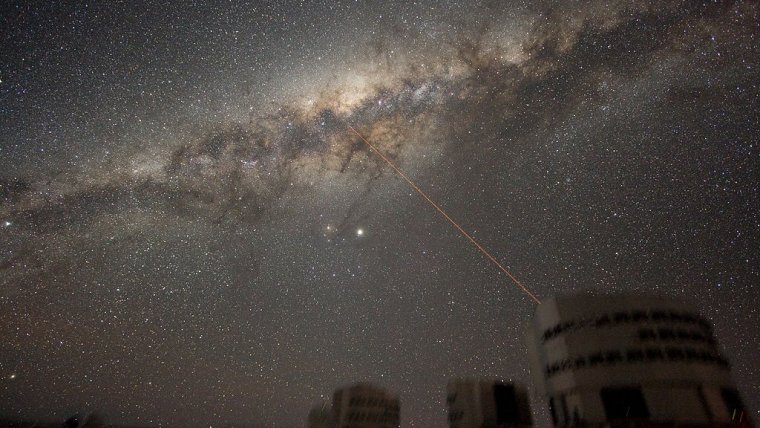| News / Science News |
Milky Way now hidden from a third of humanity
NOAA | JUNE 15, 2016
The Milky Way, the brilliant river of stars that has dominated the night sky and human imaginations since time immemorial, is but a faded memory to one-third of humanity and 80 percent of Americans, according to a new global atlas of light pollution produced by Italian and American scientists.

Image of the night sky above Paranal, Chile. ![]()
Light pollution is one of the most pervasive forms of environmental alteration. In most developed countries, the ubiquitous presence of artificial lights creates a luminous fog that swamps the stars and constellations of the night sky.
Using high-resolution satellite data and precision sky brightness measurements, NOAA’s study produced the most accurate assessment yet of the global impact of light pollution. The atlas takes advantage of low-light imaging now available from the NOAA/NASA Suomi National Polar-orbiting Partnership satellite, calibrated by thousands of ground observations.
Light pollution is most extensive in countries like Singapore, Italy and South Korea, while Canada and Australia retain the most dark sky. In Western Europe, only small areas of night sky remain relatively undiminished, mainly in Scotland, Sweden and Norway. Despite the vast open spaces of the American west, almost half of the U.S. experiences light-polluted nights.
Light pollution does more than rob humans of the opportunity to ponder the night sky. Unnatural light can confuse or expose wildlifeoffsite link like insects, birds and sea turtlesoffsite link, often with fatal consequences.
Fortunately, light pollution can be controlled by shielding lights to limit shine to the immediate area, reducing lighting to the minimum amount needed — or by simply turning them off.
YOU MAY ALSO LIKE





